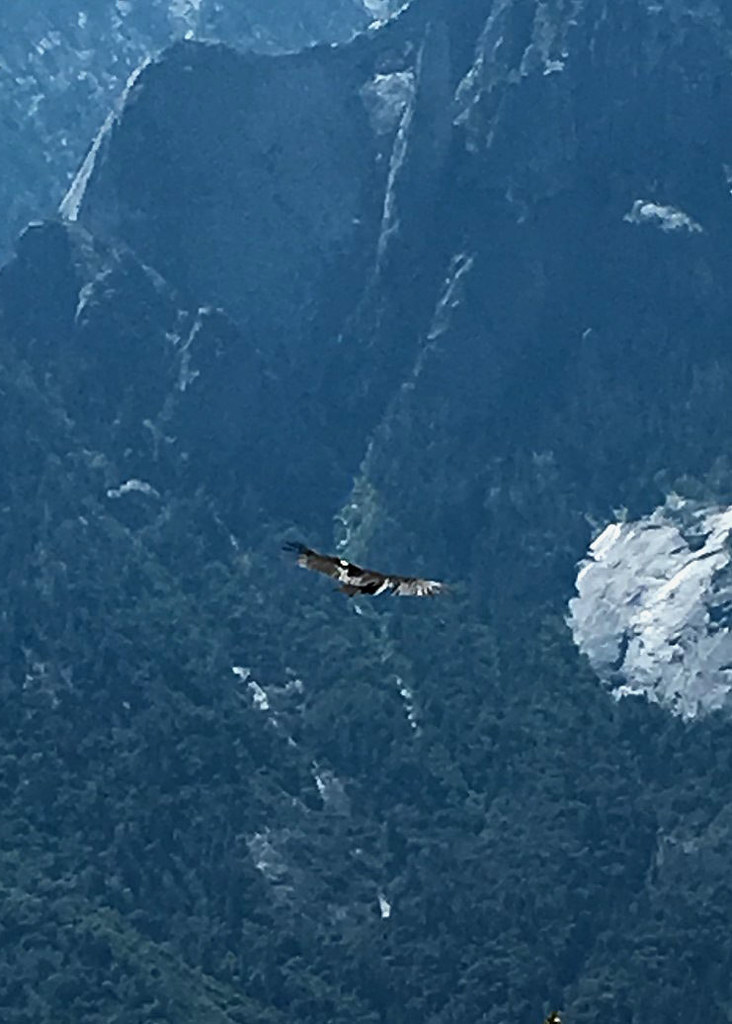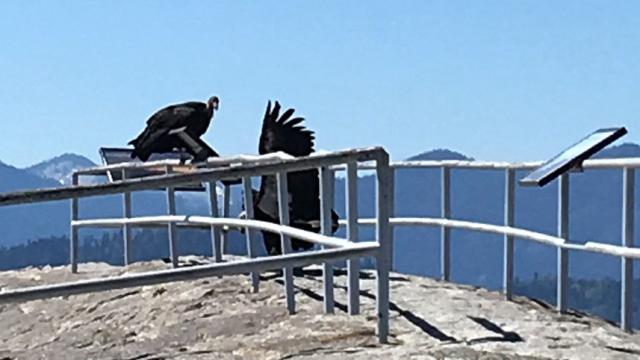For the first time in nearly 50 years, California condors have returned to Sequoia National Park. The U.S. National Park Service announced on Wednesday that park staff spotted the critically endangered bird in the park back on May 28. This sighting signals that government efforts to bring the California condor back from near-extinction are working.
The bird is among the rarest in the world. Thousands of years ago, these birds could be found across North America. But their numbers fell precipitously as colonisers moved across the West due to hunting practices as well as pesticide use. Hunters leave behind carcasses contaminated with their lead bullets, which the birds eat because they’re scavengers. This causes half of all condor deaths where scientists can identify a cause.
By 1985, only nine condors remained in the wild. Through a captive breeding program, the U.S. Fish and Wildlife Service was able to help the population grow. Condors take six years to reach sexual maturity and only produce one egg every year or two. Officials tried to give them a little help by starting them out in captivity then releasing them. Now, more than 127 are believed to roam California with more than 400 are free across the Southwest.
The come up has been real for this species. Their return to the Sequoia National Park signals that California condors may be returning to their historical habitat. They used to nest in the cavities of giant sequoia trees. Park officials haven’t witnessed that just yet, but they did find two birds hanging out atop Moro Rock, a popular hiking destination in the park, and four flying near the Giant Forest, known for its magnificent trees.
The park was don’t say nature is healing).

“Condors were consistently seen throughout the parks until the late 1970s,” Tyler Coleman, a wildlife biologist with Sequoia and Kings Canyon National Parks, said in an NPS statement. “Observations became increasingly rare throughout the latter portion of the century as the population declined.”
Part of helping this species thrive in the region is informing the public ” especially hunters ” about how to be careful in maintaining practices that can allow the bird to thrive again. Their choice of ammunition matters, and non-lead bullet options do exist. In fact, using non-lead ammunition is a legal requirement when hunting in California. Hunters can also help the population by leaving behind dead deer and such for the birds to scavenge ” but only if those carcasses are lead-free.
In the world of conservation, there’s plenty of bad news to go around. This is worth celebrating. The condor is coming back, baby.
